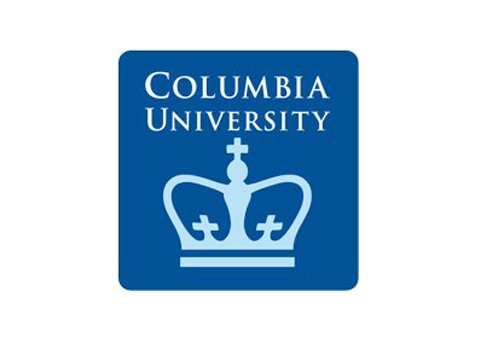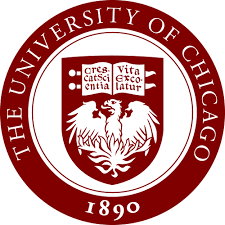University of Columbia
Columbia University officially Columbia University in the City of New York is a private Ivy League research university in Upper Manhattan, New York City. Originally established in 1754 as King’s College by royal charter of George II of Great Britain, it is the oldest institution of higher learning in New York State, as well as one of the country’s nine colonial colleges. After the revolutionary war, King’s College briefly became a state entity, and was renamed Columbia College in 1784. A 1787 charter placed the institution under a private board of trustees before it was further renamed Columbia University in 1896 when the campus was moved from Madison Avenue to its current location in Morning side Heights occupying land of 32 acres .
Columbia is one of the fourteen founding members of the Association of American Universities, and was the first school in the United States to grant the M.D. degree.The University is organized into twenty schools, including Columbia College, the School of Engineering and Applied Science, and the School of General Studies. The University also has global research outposts in Amman, Beijing, Istanbul, Paris, Mumbai, Rio de Janine, Santiago and Nairobi.[10] It has affiliation with several other institutions nearby, including Teachers College, Barnard College, and Union Theological Seminary, with joint undergraduate programs available through the Jewish Theological Seminary of America, Sciences Po Paris and the Julliard School.
Columbia annually administers the Pulitzer Prize Notable alumni and former students (including those from King’s College) include five Founding Fathers of the United States; nine Justices of the United States Supreme Court 20 living billionaires 29 Academy Award winners;[16] and 29 heads of state, including three United States Presidents. Additionally, 101 Nobel Prize laureates have been affiliated with it as students, faculty, or staff.Columbia University in the City of New York, or essentially Columbia University, is an American private Ivy League research college found in the Morning side Heights neighborhood of Upper Manhattan in New York City. It is the most established foundation of higher adapting in the State of New York, the fifth most established in the United States, and one of the nation’s nine Colonial Colleges established before the American Revolution. Today the college works Columbia Global Centers abroad in Amman, Beijing, Istanbul, Paris, Mumbai, Rio de Janine, Santiago and Nairobi. The college was established in 1754 as King’s College by regal contract of George II of Great Britain. After the American Revolutionary War, King’s College quickly turned into a state element, and was renamed Columbia College in 1784. The University now works under a 1787 sanction that places the organization under a private leading body of trustees, and in 1896 it was further renamed Columbia University.
That same year, the college’s grounds was moved from Madison Avenue to its present area in Morning side Heights, where it involves more than six city pieces, or 32 sections of land. The college includes twenty schools and is subsidiary with various organizations, including Teachers College (which is Columbia University’s Graduate School of Education), Barnard College, and the Union Theological Seminary, with joint undergrad programs accessible through the Jewish Theological Seminary of America and the Julliard School. Columbia yearly manages the Pulitzer Prize. 101 Nobel Prize laureates have been partnered with the college as understudies, staff, or staff, the second the majority of any establishment on the planet. Columbia is one of the fourteen establishing individuals from the Association of American Universities, and was the first school in the United States to concede the M.D. degree. Notable graduated class and previous understudies of the college and its antecedent, King’s College, incorporate five Founding Fathers of the United States; nine Justices of the United States Supreme Court; 43 Nobel Prize laureates; 20 living billionaires; 28 Academy Award winners; and 29 heads of state, including three United States Presidents.Discussions with respect to the establishing of a school in the Province of New York started as right on time as 1704, when Colonel Lewis Morris kept in touch with the Society for the Propagation of the Gospel in Foreign Parts, the evangelist arm of the Church of England, convincing the general public that New York City was a perfect group in which to make a college; notwithstanding, not until the establishing of Princeton University over the Hudson River in New Jersey did the City of New York truly think about establishing as a college.
In 1746 a demonstration was passed by the general gathering of New York to raise stores for the establishment of another school. In 1751, the get together designated a commission of ten New York inhabitants, seven of whom were individuals from the Church of England, to direct the stores gathered by the state lottery towards the establishment of a college. Classes were at first held in July 1754 and were managed by the school’s first president, Dr. Samuel Johnson. Dr. Johnson was the main teacher of the school’s top notch, which comprised of a negligible eight understudies. Guideline was held in another school building bordering Trinity Church, placed on what is currently lower Broadway in Manhattan. The school was formally established on October 31, 1754, as King’s College by illustrious contract of King George II, making it the most seasoned organization of higher adapting in the condition of New York and the fifth most seasoned in the United States. In 1763, Dr. Johnson was succeeded in the administration by Myles Cooper, an alum of The Queen’s College, Oxford, and a vigorous Tory.
In the charged political atmosphere of the American Revolution, his boss rival in exchanges at the College was an undergrad of the class of 1777, Alexander Hamilton. The American Revolutionary War softened out up 1776, and was cataclysmic for the operation of King’s College, which suspended guideline for a long time starting in 1776 with the entry of the Continental Army. The suspension proceeded through the military control of New York City by British troops until their flight in 1783. The school’s library was plundered and its sole building ordered for utilization as a military healing facility first by American and after that British forces. Loyalists were compelled to relinquish their King’s College in New York, which was seized by the radicals and renamed Columbia University. The Loyalists, drove by Bishop Charles Tingling fled to Windsor, Nova Scotia, where they established what is currently the University of King’s College.After the Revolution, the school turned to the State of New York so as to restore its essentials, guaranteeing to roll out whatever improvements to the school’s contract the state may demand. The Legislature consented to support the school, and on May 1, 1784, it passed “an Act for giving certain benefits to the College leading up to now called King’s College.”
The Act made a Board of Regents to supervise the revival of King’s College, and, with an end goal to show its backing for the new Republic, the Legislature stipulated that “the College inside the City of New York until now called King’s College be perpetually from this point forward called and known by the name of Columbia College,” a reference to Columbia, an option name for America. The Regents at last got to be mindful of the school’s damaged constitution in February 1787 and named a correction board of trustees, which was going by John Jay and Alexander Hamilton. In April of that same year, another sanction was embraced for the school, still being used today, giving force to a private leading body of 24 Trustees.
On May 21, 1787, William Samuel Johnson, the child of Dr. Samuel Johnson, was consistently chosen President of Columbia College. Preceding serving at the college, Johnson had taken part in the First Continental Congress and been picked as a representative to the Constitutional Convention. For a period in the 1790s, with New York City as the elected and state capital and the nation under progressive Federalist governments, a restored Columbia flourished under the support of Federalists, for example, Hamilton and Jay. Both President George Washington and Vice President John Adams went to the school’s initiation on May 6, 1789, as a tribute of honor to the numerous graduated class of the school who had been included in the American Revolution.



